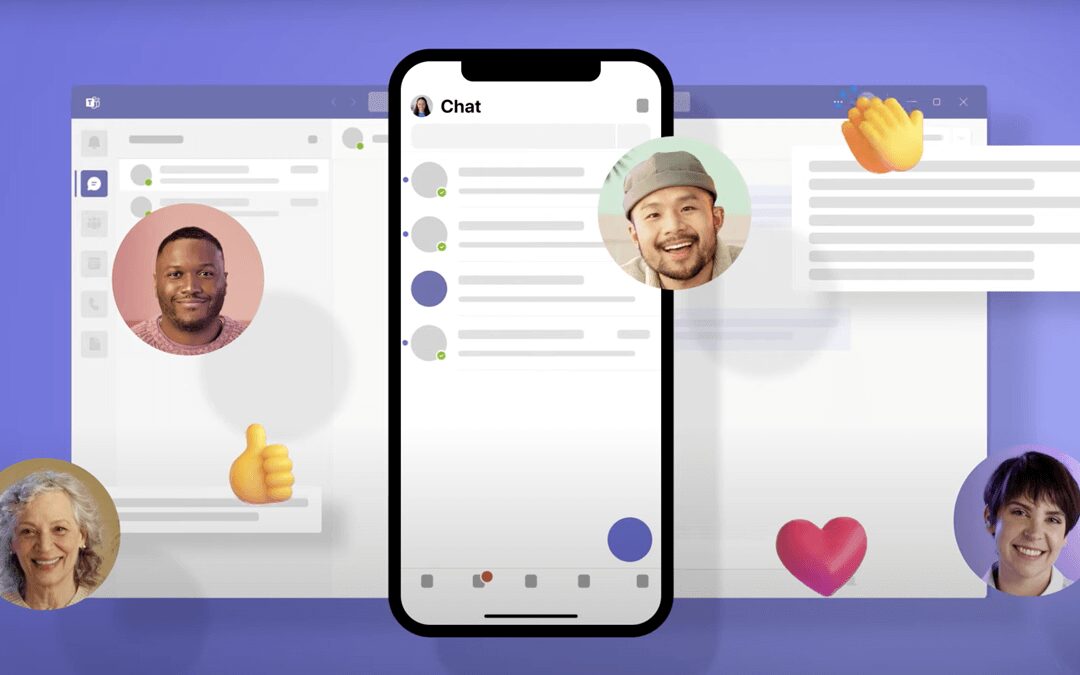Microsoft Teams is growing at an incredible rate. In October of 2020, Microsoft reported a 50 percent rise in daily active users from the numbers six months prior.
More and more IT business strategies include implementing Teams as a hub for communication and collaboration.
Implementing Teams is a project that requires some planning. There are several components of a successful Microsoft Teams adoption strategy that you should consider, depending on the size and structure of your organization.
Having a change management plan that outlines your strategies and the expected goals and results will make your implementation more successful.
Planning Your Microsoft Teams Adoption Strategy
Change is often met with resistance. This is true for most new product roll-outs, especially when the product requires a mindset shift. To make the best use of Teams, you want your users to embrace the collaboration tools it offers, rather than feel like they are being “forced” to use it.
Your initial change management plans should include answering the following questions:
- What is the timeline for Microsoft Teams implementation?
- What are the milestones along the way?
- Which MS team members are to be involved to make this project successful?
- What are the Microsoft Teams training needs of the end-users?
- What type of Microsoft Teams governance needs to be in place?
The strategies you employ will be related to your answers to the above questions. Here are some of the best practices for Microsoft Teams adoption.
Introduce Microsoft Teams in Phases
If your organization is large and involves many departments, a large-scale roll-out will be overwhelming. Users may flood your IT support with questions, and you can quickly lose momentum.
Run an internal pilot of a Microsoft Team that is limited to your IT department. That way, your IT team has a good understanding of the product and its features. They will then be better equipped to help end-users with questions.
Once your internal pilot is completed, a phased implementation might make sense. Bringing on one department or group at a time allows your IT team time to address the specific needs of that group.
Have Management Support
Microsoft Teams is more than just a product: it is a new way of working. Without support from the executive level, users may be inclined to settle back into old methods of collaboration and communication.
Have key stakeholders within the executive level that can communicate the need for Microsoft Teams adoption, the reason behind the decision, and the benefits. But this communication needs to be more than just words.
Without buy-in from the executive level, you could continue to battle user adoption.
Think Long-Term Instead of Short-Term
It might be tempting to treat the implementation of Microsoft Teams as a project with a specific start and end date. And yes, you will likely have a project schedule with timelines and milestones. But overall adoption is more than that.
Microsoft Teams will be more than just a new product. It is a shift in how you interact internally. As its usage becomes more familiar to your users, their needs may change.
Additionally, Microsoft has been rapidly rolling out new features as the overall adoption of Teams has exploded. In October of 2020, Teams focused on an improved experience with Teams meeting and calling by packing in a lot of enhancements.
To stay current, you’ll need to review and implement new features as they become available.
Provide Training and Use Cases
As with any major roll-out, you need to have a plan for providing training to your team members. You can use some of the generic training for Microsoft Teams features, but you should also plan for some internal training that focuses on specific use cases. By working with different departments in advance, you can understand how they might make use of different features.
This is also an opportunity to make departments feel involved in the decision-making process. You can have individuals within the departments identify specific business needs. If you have done an internal roll-out with your IT department first, your IT team can be equipped to propose solutions.
Microsoft Teams can also be used as your training platform, which reinforces its value. You can use meetings and channels within Teams to facilitate your training. You may also want to break some training sessions into small groups to make sure the content is relevant.
Identify Your Power Users
Your power users will be critical to your overall success. They can be your cheerleaders with adopting Microsoft Teams and find ways to make Teams better across their departments.
Power users are employees who make new technology work for them and are not afraid of change. They usually catch on quickly and naturally develop expertise.
If you are able to identify your power users early, include them in your internal roll-out or shortly after that. Give them an opportunity to provide feedback. Their support of Microsoft Teas will encourage others, as they tend to lead by example.
If you are not able to identify power users in advance, watch for users who seem to adapt quickly during the roll-out. Provide praise for their usage and recognize them as champions. These users will be able to help others within their department that may be struggling.
By providing occasional Microsoft Teams deployment updates that highlight achievements, you can celebrate wins together as an organization.
Successfully Roll Out Teams
You have already decided that Microsoft Teams will improve your overall internal collaboration. From fewer emails to the tight integration with Microsoft Office, you know that it will fundamentally change the way you work.
Now the next task is creating a smooth user experience to ensure employee engagement and that they embrace Microsoft Teams.
The more you think through your overall Microsoft Teams adoption strategy, the more you can prepare for successful adoption. If you need help with your overall strategy, our senior-level team provides expert Microsoft Teams consulting and managed services.
Request a call today, and we will be in touch to discuss your digital workplace and how we can help with your technology adoption.



